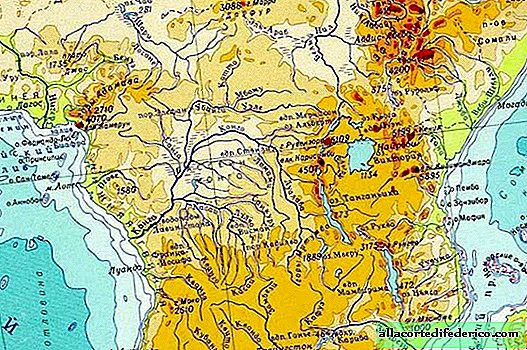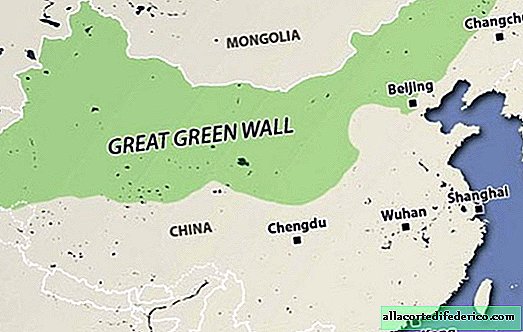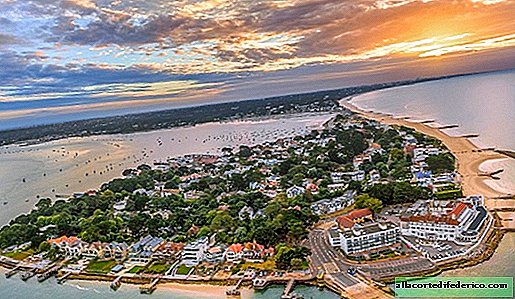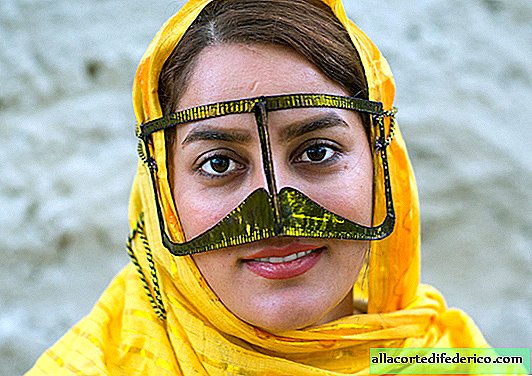Pyramid of Bomarzo: the mysterious past of the Etruscans
The ancient history of Europe is often shrouded in mystery. Mysterious peoples, diverse cultures and strange legends - all this is left in the past.
One of these mysterious cultures belongs to the ancient Etruscans. The once rich and vast Etruscan civilization ceased to exist in the shadow of the developing Roman Republic. But, without a doubt, this important culture has left its mark on the Apennine peninsula.
Today we are exploring a unique mysterious archaeological site that tells about the glorious and intriguing past of Etruscan civilization and the distant corners of history - the pyramid of the Etruscans of Bomarzo.
Archeology often involves excavation - digging up the remnants of our past long gone from the surface of the earth. But what can be said about those monuments that, intact and intact, continue to exist on the surface. They should be familiar and easily accessible. It would seem so, but not quite ....
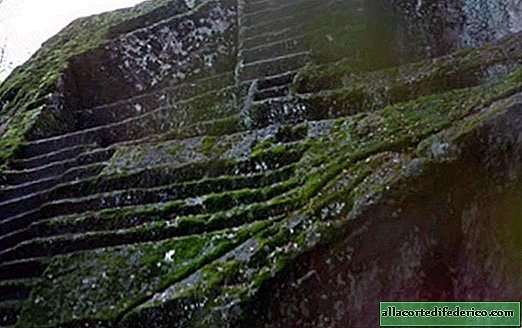
Even if the remnants of the past are above the earth, they are not so easily detected and recognized. Nature hides them perfectly. And this is the story of the Bomarzo pyramid. The area around the city of Bomarzo, an hour and a half drive north of Rome, is a dense forest. This is exactly the part that was formed by primary volcanic activity, as well as a wildlife refuge, filled with lakes, hills and forests.
In 1991, two Italian researchers reported the discovery of a large object resembling a stepped pyramid. The discovery did not find a response in the scientific community of Rome. It caused a small surge of interest and was quickly forgotten.
Only in 2008, the Bomarzo pyramid again declared itself. Salvatore Fosci drew attention to her again. He cleared the dense vegetation around her, and this time took her more seriously.
 City of Bomarzo and surroundings
City of Bomarzo and surroundingsThe monument, which was "unearthed" by Mr. Foski, was a rare discovery on the Italian peninsula. Despite the fact that he quickly acquired the name "Bomarzo Pyramid", the structure of the monument is not quite pyramidal. In fact, it is a large boulder made of volcanic gray tufa of triangular, conical shape, measuring about 26 feet (8 meters) by 53 feet (16 meters) and about 33 feet (10 meters) high.
This boulder was known to locals as the "Preacher's Stone". At first glance, the carved steps remind of the Mayan pyramids. The front of the pyramid is divided into two levels. The first staircase has 20 steps and leads to a small altar. From there go two smaller stairs, with 9 and 10 steps, respectively. They lead to the upper main altar. The right front side is very angular, with noticeable deep grooves running from the top to the very base of the pyramid, which indicates the sacrificial role of these altars. Between the staircase there are several square openings that are apparently used to hold the pillars and similar structural elements.
The skill with which steps and grooves were cut out of volcanic tuff suggests an advanced civilization and the possible ritual role of the Etruscan pantheon, which played a significant role in society. After the pyramid was discovered, experts agreed that it was built around the 7th century BC as a temple altar.
Appearing in the Villanova culture dating back to the Iron Age in 700 BC, Etruscan civilization has become one of the most important in ancient history. From the very beginning, the Etruscans formed a unique identity and constantly traded with the Celts in the north and the Greeks in the east.
 Etruscan dancers. 470 BC
Etruscan dancers. 470 BCThey were influenced by ancient Greece in mythology, art and architecture, and possibly also in religion. Among the Celtic peoples, Etruscan luxury goods were in great demand, and the constant trade between them made the Etruscan elite very rich and influential, which in turn was reflected in literature, art and culture.
But on the Apennine Peninsula, the Etruscans faced the rise and fortification of a new and more formidable power - Rome. The political picture of the Mediterranean changed, and the influence of the Etruscans began to weaken.
From the 4th century BC, a series of Roman-Etruscan wars began, which led to the gradual seizure of Etruscan cities. The last of them, Volsinia, fell in 264 BC. The Etruscans were finally assimilated by Roman culture. They had a great influence on the development of Roman identity, but could not resist the growing expansion of this powerful city-state.
The Etruscan language lasted about 300 years, until it finally disappeared, and with it the remains of a once powerful civilization.
The Etruscan religion was heavily influenced by Greek mythology and also resembled the emerging Roman culture. Religion was polytheistic, and much attention was paid to the power of deities - the Etruscans believed that all visible phenomena were divine manifestations.
Their pantheon was not much different from their neighbors. The gods, called the Ais in Etruscan, were divided into three layers. The lowest layer was reserved for ordinary, local deities - Strength, the god of the sun, Tivra, the moon goddess, Laran, the god of war, and his wife Turan, the goddess of love and fertility.
 Figurines of the god of the Sun Strength. 500-480 BC
Figurines of the god of the Sun Strength. 500-480 BCIn the second “layer” there were Greek deities: Fufluns, Aritimi, Menrva - the Etruscan equivalents of Bacchus, Artemis and Minerva. The highest aspect of the Etruscan pantheon was the trinity governing everything: Tinia, the god of heaven, his wife Uni and the goddess of the earth - Semla. From this carefully thought-out pantheon a complex system of priests and officials emerged.
The most prominent form of religious practice was divination by the liver. Priests sacrificed sheep and studied irregularities in the liver in order to predict important events. Perhaps this particular practice of animal sacrifice is associated with the Bomarzo pyramid.



